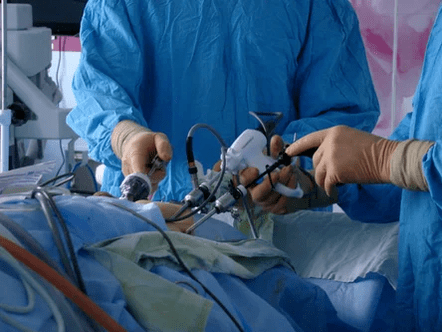
Many doctors jokingly call prostatitis male menopause.Such a disease is diagnosed in 20% of cases in men after forty years, in 70% - after sixty years and in 90% of cases after the age of seventy years.The disease can occur in two forms: acute prostatitis and chronic.This disease must be treated, especially since it is well suited for therapy.But many men ignore uncomfortable symptoms, which leads to the development of many complications that are more difficult to heal.
The reasons for the development
Acute prostatitis is acute prostate pathology that develops into its tissue due to the inflammatory and infectious process in the organ due to the penetration of pathogens.The disease is characterized by the occurrence of a swelling of the gland, purulent content in its tissues.This leads to the occurrence of many unpleasant symptoms that affects the functionality of the genitarian system.
There are many causes of acute prostatitis.In most cases it provokesPathrotage microbes.Some of the microbes can exist on the skin or intestine in a healthy person in a healthy person.Under the influence of some factors, they are activated, penetrate into the tissue of the glands and actively multiply there.Often the disease appears, for example, due to sexually transmitted diseasesChlamydia, ureaplasmosis, gonorrheaetc.
Acute form of prostatitis also occurs as a complicationUrethritis.Microbes fall through the channels that open into the urethra.The cause of prostatitis is often the spread of bacteria from other organs of the genitator system.Iron can often be affectedDuring surgical manipulations, catheterization, diagnostic measures.
Since there is a large amount of blood vessels in the prostate in the prostate, the infection here can, for example, get chronic pathologies in the body with a blood flow, for example, for example,Tonsolitis, bronchitis etc.If anyAnal cracksMaybe the penetration of microbes into a prostate with a lymph current.
However, infections do not always lead to the development of the disease.Stagnating phenomena in the vessels of the pelvic region that developWith longer abstinence of sexual contacts or a large number.
Stagnating phenomena are connectedA lack of physical activity, constant constipation, alcoholism, varicose veins in the pelvic region, hypothermia of the body.
classification
In urology, different forms of pathology are differentiated that are their stages of development:
- Catarrhal formIt is characterized by the occurrence of inflammation in the organ, a change in its mucus pithel.Over time, there is a swelling of the gland, a mucous membrane that contributes to the progress of the disease.
- Then the focal addition appears.The disease goes into the second stage (form) -Foil form.The urinary channels are tight or clogged, the secret stops standing out from the organ normally.The pus can be released into the urinary channel and forms purulent priorities there.The glandular cells change, the prostate continues to swell and increases the size.
- Parenchymal shapeIt develops when the organ is fully inflamed, a purulent infection arises.In the absence of therapy, small purulent herds merge into a huge abscess, which often opens in urethra, intestine and bladder.In some cases, it is possible to develop this form of pathology immediately if the infection with a blood or lymph flow penetrates into the organ's interstitial tissue.

Symptoms
The symptoms are spoken of lively prostatitis.How much the signs will be visible and noticeable depends on the form (stage) of the disease.The general signs of the disease include the following:
- Pain syndrome when eliminating urine;
- Symptoms of poisoning;
- Pain in the genital region;
- More frequently urged to the toilet, especially at night;
- Discharges from the urethra are possible.
While prostatitis is progressing in a man, pain syndrome will spread to other areas.This is due to the transfer of impulses through nervous endings.The excretion of the urine becomes very painful.At this stage, his sharp delay develops, which is considered a dangerous condition because the bladder can break.
The symptoms in acute prostatitis continue to increase.Severe pain in defecation occurs, the body temperature increases.The prostate is increased, dense and painful.Urina will be muddy due to the content of pus and mucus.
In the last stage, the disease manifests itself strongly.
The body temperature increases strongly, fever and shaking frost, loss of appetite, strong weakness, exhaustion of the body as a whole.The urination can stop completely if you try to go to the toilet, a man will have acute severe pain.This disease is painful, pain syndrome spreads throughout the pelvic area.A man cannot find a place for himself, he is forced to lie with printing members.When the inflammation spreads to the rectum, the mucus comes from the anus.A yellow -green mucus with an admixture of blood is released from the urinary channel.

This condition can causeSepsis, cystitis, pyelonephritis, chronic prostatitis, abscess.In this case, urgent hospitalization of patient and emergency treatment is required.
Diagnosis
Since the symptoms of acute prostatitis appear quite bright in men, the doctor can immediately suspect the pathology.But he has to carry out a thorough exam.In this case, the rectal examination is strictly contraindicated.
The urologist must determine the stage (form of the disease) using laboratory and instrumental techniques.The doctor takesThe secret of the prostatefor research.The concentration of leukocytes will increase, which indicates acute inflammation.
Then run outLaboratory tests of blood and urine.The urine is sent to the bacteriological sowing for the examination as well as for determining the infection factory and its sensitivity to antibacterial drugs.It is also possible:
- PCR to determine the STD;
- Urofloometry to determine the severity of the violations in the organ;
- An ultrasound of the prostate to determine the shape and size of the organ, changes in the IT, the stages of the course of the disease;
- Dopplerometry helps to distinguish acute prostatitis from other pathologies.
- The MRI of the pelvic organs is often prescribed when planning a surgical intervention.
- Analysis of the SPA concentration in the blood;
- Examination of the discharge lines from the urethra;
- Stitch through the body sections with suspicious distrust and abscess.
Treatment
A urologist will tell in detail how to treat acute prostatitis.The main component of the therapy is the antibacterial drug that is selected according to the results of BAKPOSEV.The antibiotics helps for two or three days, one person feels much better, the pain begins to let go.With this form of the disease, however, such medication must be taken for a month, even if the symptoms have disappeared completely.
This is also necessary, so that the disease does not become a chronic form that is observed quite often.
When selecting the drug, the doctor takes other factors into account:
- Some products penetrate poorly into the gland tissue;
- Other funds are accumulated in large quantities in large quantities.
The treatment of acute prostatitis in men should be based on the use of powerful medication, as in other cases that threaten human life.Doctors are typically prescribed fluorchinolone.When using macrolids, the dosage should be great.This applies particularly to patients with immunosuppression.
Typically, antibiotics using intravenous injections are administered.In the early stages, the disease can be treated at home or outpatient.In this case, the bed rest is prescribed, since each power load can provoke the spread of the infection and the development of sepsis.
In combination with antibiotics, the following drugs are also prescribed:
- Analgetics;
- Antipyretika;
- NSAIDS;
- An opiat can be prescribed for severe pain;
- Diuretics to reduce poisoning of the body;
- Laxatives to facilitate defecation;
- Anti -spasmodic drugs to facilitate the excretion of urine;
- Alpha blocker.
If a man has a strong urine delay, the catheterization of the urea is carried out.Antiandrogens are often used to reduce swelling and inflammation in the organ, to improve the drainage of secretion, to normalize blood flow in the gland and to reduce the risk of infection in the body.
It is possible to use hormones, e.g.B. estrogen, cold fine for removing edema and pain.Massage and thermal interventions in this form of the disease are strictly prohibited.They can only be used during the recreation period.
Surgical intervention

In the absence of pain, the doctor can suspect the development of the abscess.In this case, surgical intervention is carried out to eliminate the areas in which it occurs.Use the abscess stinging drainage.The organ is removed in severe and extreme cases.
The operation is eliminated in the presence of an abscess, an acute delay in urine, a strong pain syndrome, which is not eliminated by drugs, the occurrence of stones and neoplasms as well as in the ineffectiveness of drug treatment, frequent infections of the genitarian system, parrocranceitis.
The surgeon can use one of the following methods:
- Corpse (transurethral resection)It includes the removal of the inside of the organ.Most often used;
- Prostateincludes a partially or complete removal of the organ by a cut in the lower abdomen;
- Laser.In this case, the affected areas of the body are removed with a laser.
- Abscess drainageIt is carried out by the rectum.The drainage is inserted into the incision through which the pus is pumped.
- It is carried out to facilitate the excretion of the urineTransportetal incisionin the organ.
When the structure of the glandular tissue is restored, its functions are normalized, the secret of the prostate normalizes its composition, the pathogen is completely removed from the body.We can talk about the healing of prostatitis.
forecast
The forecast of the disease will be good during therapy.Sometimes the negative consequences of acute prostatitis develop.The disease can go into a chronic form, then it will be more difficult to eliminate.The dangerous consequences of an untreated illness are the abscess of the organ, sepsis and acute urinary tract.In some cases, death can occur due to the occurrence of complications.Usually, men do not allow such consequences to develop such consequences because they come to the doctor and start the course of therapy.
prevention

To prevent prevention, it is necessary to prevent the appearance of predisposing factors.This requires timely treatment of all infections in the body so that they do not turn into a chronic form and do not become potential places of infection that spread to the prostate.
When carrying out surgical manipulations, the doctor should pay attention to the use of antiseptics.Otherwise, the risk of microbes occurs in the patient's body.It is important that the man and his sexual partner treat the strict hours in a contemporary way, and it is best to prevent your appearance.Sexual life should take place with a constant partner, it should be regular.
It is necessary to lead a mobile lifestyle, to do sports or to do physical exercises, to observe the rules of intimate hygiene.
Men usually turn to doctors in extreme cases.But if negative characters appear, it is better to contact them immediately.This will help to avoid many health problems and even save life in some cases.













